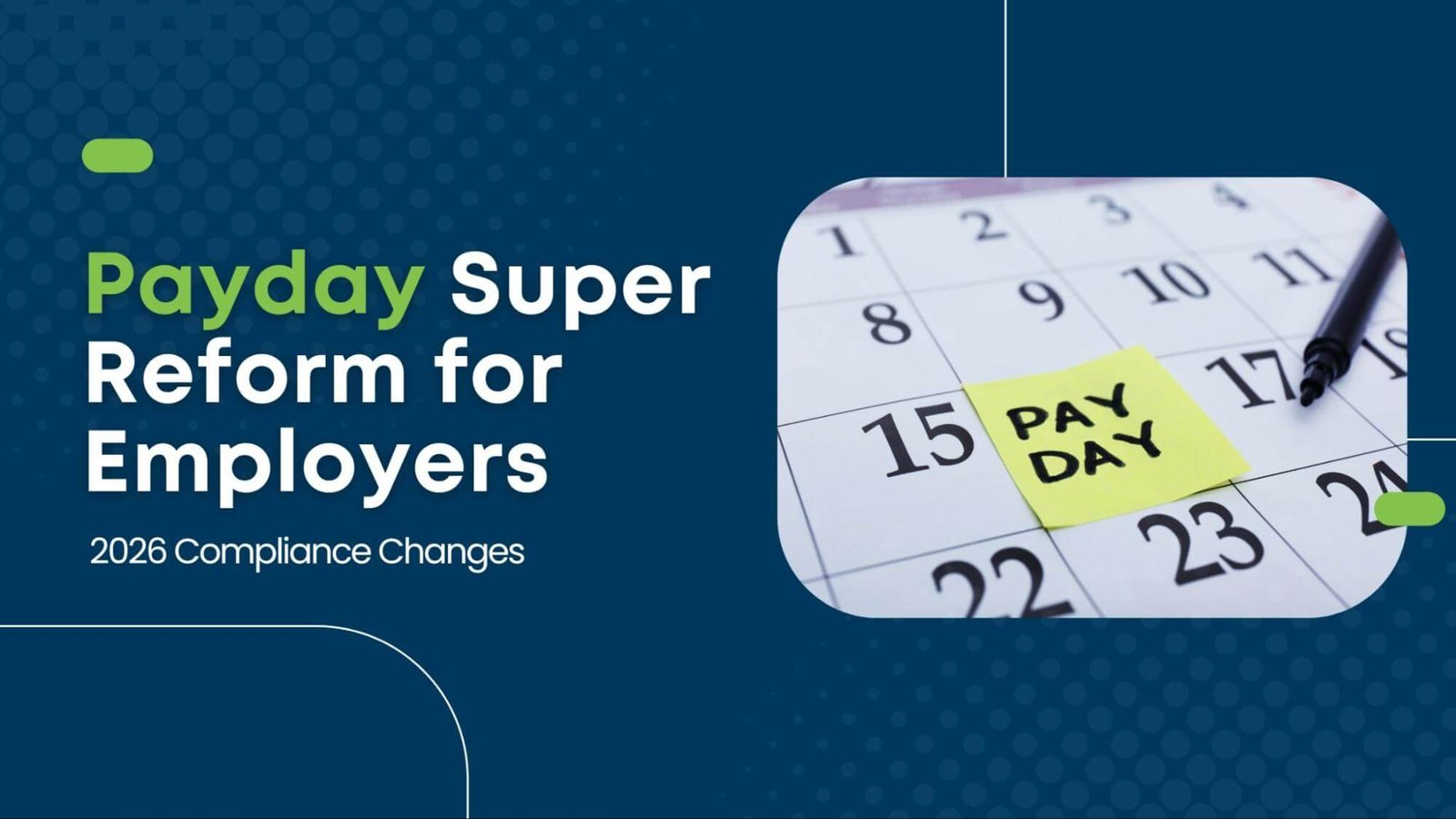
How to Set Up a Self Managed Super Fund? Costs, Work
- Aesha Shah
- January 24, 2025
- 6 minutes
How to Set Up a Self managed Super Fund (SMSF)?
A Self managed Super Fund (SMSF) gives Australians the opportunity to have complete control over their retirement savings. While this can be advantageous for those with investment knowledge, it also comes with the responsibility of managing the fund and adhering to strict regulations. In this comprehensive guide, we’ll walk you through the process of setting up a Self managed super fund, including the steps, costs, and legal obligations involved.
What is an SMSF (Self managed Super Fund)?
An SMSF is a private superannuation fund that you manage yourself. Unlike traditional super funds, which are operated by financial institutions, SMSFs allow you to make your own investment decisions and have direct control over the management of your retirement savings.
However, being an SMSF trustee isn’t a simple task. It requires proper understanding of investment strategies, superannuation laws, and tax regulations. Moreover, SMSFs are subject to strict compliance requirements, meaning trustees must ensure the fund adheres to the Superannuation Industry (Supervision) Act (SIS Act) 1993.
Is an SMSF right for you?
Before jumping into how to set up a self managed super fund, it is important to check whether it aligns with your financial goals and personal situation. Here are some important factors to consider.
1. Investment Knowledge
A solid understanding of many investment possibilities, including shares, real estate, bonds, and cash, is necessary for managing an SMSF. Since you will be in charge of selecting investment choices for your fund, you should have faith in your skills or think about consulting experts..
2. Time Commitment
It takes a lot of time to run an SMSF. You’ll have to handle the administrative aspects of things in addition to choosing investments. Bookkeeping, tax return filing, audit management, and regulatory compliance are all included in this. Trustees are also required to maintain records of every investment and transaction decision.
3. Costs
For people with larger balances—typically over $200,000—SMSFs can be affordable. Nevertheless, the fund’s establishment and upkeep comes with expenses. These consist of administrative expenses, setup fees, and continuing audit fees. To ascertain whether an SMSF is financially feasible for your retirement objectives, it is essential to have a thorough understanding of the SMSF setup costs.
Think about contracting out some parts of SMSF management to qualified service providers if you’re not confident you can handle all the duties involved. This can guarantee regulatory compliance and lessen the workload associated with administrative duties.Explore SMSF outsourcing services for a smoother experience.
Steps to Set Up a Self managed Super Fund
If you’ve decided that an SMSF is the right choice for your retirement savings, the next step is to set it up. Here’s an overview of the key steps involved:
1. Choose your SMSF structure
Choosing the trustee structure is one of the first choices you will have to make when establishing an SMSF. Learning how to set up a self managed super fund begins with this decision. There are two primary alternatives available to you:
Individual Trustees
Families or small groups of trustees frequently choose this option. All fund members must be trustees, and each trustee bears personal responsibility for overseeing the SMSF. Although they are typically less expensive to set up, individual trustees run the danger of being held personally liable for noncompliance.
Corporate Trustee:
An organisation that serves as the SMSF’s trustee is known as a corporate trustee. If you wish to reduce your personal liability, this structure is perfect because it provides superior asset protection.
2. Appoint Trustees and ensure eligibility
All trustees of an SMSF must meet certain eligibility criteria:
Residency
All trustees must be Australian residents.
Trustee Declaration
Each trustee must sign a Trustee Declaration, agreeing to adhere to self managed super fund rules and obligations.
Fit and Proper Person
Trustees must have the necessary skills and experience to manage the fund effectively.
You must ensure that all members are also trustees if you choose the individual trustee structure. If you opt for a corporate trustee, the company will act as the trustee, but the company directors must be members of the SMSF.
3. Create a Trust and Trust Deed
An SMSF must operate as a trust, and setting up a trust involves two main components:
Appoint Trustees
You must formally appoint the trustees who will manage the SMSF.
Trust Deed
The trust deed describes the operational guidelines of the fund. It outlines the rights and obligations of trustees and members, as well as the investments that are allowed and the management of the fund. This document is essential to the SMSFs efficient operation and must abide by the law.
4.Create an SMSF Account.
Your SMSF must be registered after the trust deed is finalised. To do this, you have to:
Apply for an Australian Business Number (ABN)
Your SMSF will need an ABN to operate legally.
Obtain a Tax File Number (TFN)
Your fund must have a TFN to ensure that it can be taxed correctly.
Register with the Australian Taxation Office (ATO)
The ATO regulates SMSFs, and registration with them ensures your fund meets the necessary legal requirements.
5. Open a Bank Account
Your SMSF must have a separate bank account. This account will be used to manage contributions, income, and expenses related to the fund. It is important to maintain a clear separation between your personal finances and the fund’s finances.
6. Develop an Investment Strategy
Every SMSF must have a written investment strategy that guides the fund’s investment decisions. This strategy should:
- Align with the long-term goals of the fund (e.g., retirement savings).
- Reflect the risk tolerance of the fund’s members.
- Ensure that assets are varied across different investment types to reduce risk.
The investment strategy must be reviewed regularly to make sure it remains appropriate as the financial situation of the fund’s members evolves.
7. Obtain an Electronic Service Address (ESA)
To streamline the contribution process, your SMSF will need an Electronic Service Address (ESA). The ESA is used to receive contributions through SuperStream, a mandatory government initiative that requires employers to make contributions electronically.
Understanding Outsourced SMSF Setup Costs
Setting up an SMSF is not without its costs. These can be divided into two categories:
Establishment Costs
Trust Deed Preparation
You’ll need to have a legally compliant trust deed drafted, which could involve legal or accounting fees.
Registration Fees
There are fees associated with registering your SMSF with the ATO.
Professional Advice
If you seek professional advice during the setup process, such as from a financial planner or accountant, there will be additional costs.
Ongoing Costs
Annual Audit
Your SMSF must undergo an annual audit by an independent auditor. The cost for this can vary depending on the complexity of your fund.
Administration Fees
These include the costs of bookkeeping, tax return preparation, and other administrative tasks.
Investment Management Fees
If you outsource investment management, there will be costs associated with this as well.
Outsourcing administrative tasks can ease the burden, but it’s essential to balance these costs with the benefits of having full control over your retirement savings.
Setting Up Self managed Super Fund to Buy Property
Many Australians use SMSFs to invest in property. However, there are specific rules and considerations when setting up a self managed super fund to buy property.
Compliance with Rules
Property investments must pass the Sole Purpose Test, meaning the property must solely benefit the retirement interests of the SMSF members. Additionally, the property cannot be used by the trustees or their family members for personal use.
Borrowing to Invest
SMSFs can borrow money to purchase property through a Limited Recourse Borrowing Arrangement (LRBA). This borrowing structure allows the SMSF to acquire property while protecting the other assets in the fund. However, borrowing to invest in property involves additional compliance considerations and higher costs.
By leveraging the benefits of an Australian super SMSF, property investment becomes an appealing choice for many Australians.
Tax Benefits
Any income generated from the property, such as rent, and any capital gains are taxed at concessional rates within the SMSF. This tax advantage makes property a popular investment choice for SMSF trustees.
Legal and Regulatory Compliance while SMSF Setup
Legal compliance is important when managing an SMSF. Key obligations include:
Adherence to the Superannuation Industry (Supervision) Act 1993 (SIS Act)
All SMSFs must comply with this Act, which sets out the rules for managing super funds.Learn more about cracking the SMSF code here.
Annual Audits
Each year, your SMSF must undergo an independent audit to ensure it complies with regulations.
Record-Keeping
Accurate records must be maintained for all fund transactions and trustee decisions. These records should be kept for a minimum of five years.
Failure to comply with legal requirements can result in heavy penalties, so staying informed is essential.
Common Challenges When Setting Up an SMSF
Administrative Burden
Keeping track of documentation, compliance, and audits may be very challenging.
Investment Risks
Bad choices might have a negative impact on your fund’s performance.
Time Commitment
It might be difficult to manage your SMSF while juggling your personal and professional obligations.
If you find these challenges daunting, outsourcing some aspects of SMSF management can reduce stress and ensure compliance Discover advanced SMSF outsourcing approaches.
Recent Trends and Developments in SMSFs
Australian Youth Adopting SMSFs
In order to take charge of their retirement funds and, more specifically, to get into the real estate market, more millennials are opting to use SMSFs.
Taxation Changes
Recent changes to the taxation of superannuation balances exceeding $3 million may influence how trustees manage their SMSF investment strategies.
Your Next Steps
Setting up a self-managed super fund (SMSF) can offer significant benefits, particularly for those with the time and expertise to manage their retirement savings. However, the process is not without its challenges. By understanding the costs, legal requirements, and responsibilities involved, you can make informed decisions and ensure your SMSF operates smoothly.
Navigating the complexities of an SMSF requires knowledge and careful planning, and this is where professional assistance can make a real difference. With NCS Australia services designed to simplify setup, ensure compliance, and provide ongoing support, you can focus on building a secure financial future without being overwhelmed by administrative tasks or legal obligations.
Explore how the right support and expertise can help you streamline the process and make the most of your SMSF. Take the first step towards confidently outsourcing financial Future








